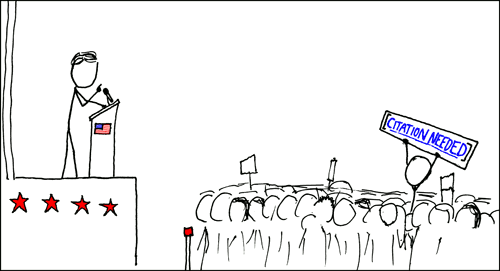4.1: Introduction to Citing Your Sources
- Page ID
- 185974
What is Citing?
Citing is the practice of giving credit to the information sources from which you’ve taken ideas, paraphrased, quoted, or otherwise used in some way in your paper or presentation.
You see writers citing all the time in your daily life: when you're reading an article(opens in new window) and it links to another article(opens in new window) it references, or to a recent study(opens in new window) or a news article(opens in new window) on the topic. That's citing. In college, we follow formalized conventions (called citation styles) for referencing other information, but the idea is the same: give credit where credit is due and help your readers find the information you discuss.
Why Cite?
In this week's assignment, you'll be asked to explain why citing is important (in your own words). There are five primary reasons to cite your sources. Citing your sources:
- Allows your reader to continue learning about your topic by making it easy to follow up with your cited sources.
- Strengthens your credibility and argument, because your readers can easily verify the claims you’ve made.
- Is an opportunity for you to show how your work builds upon research and ideas that have come before it. Citing existing ideas and research allows you and your reader to recognize connections between your work and established knowledge, and understand how your ideas fit into the larger conversation about the topic.
- Makes you a great member of society. Attributing your sources is socially-responsible use of information - you have an obligation to give credit where credit is due. It is the right thing to do. It is respectful of others' work and efforts. It sets a beautiful example!
- Is expected of you as a member of Clackamas Community College. Citing your sources acknowledges the work of others – this acknowledgement is a foundational piece of academic inquiry, learning, and ethically joining the academic conversation. Citing your sources is one aspect of student conduct expected of you and it helps you to avoid plagiarism.
Related to this last point, as a student at Clackamas, you agree to the Student Freedom, Rights & Responsibilities as laid out in the Student Handbook(opens in new window).
All members of the CCC scholarly community are asked to “support the college’s mission and help achieve its educational purpose” by conducting themselves in ways expected by American institutes of higher education (Clackamas Community College 159).
One expectation is that you will demonstrate academic integrity by avoiding plagiarism.
Image credit: Wikimedia Commons(opens in new window)


